Philips Cineos 37PF9731D 37in LCD TV Review
Philips Cineos 37PF9731D 37in LCD TV
A feature packed, Full HD 37in TV from Philips - Riyad has already started saving up his pennies.
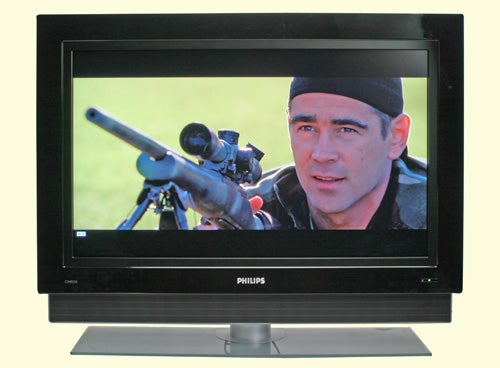
Verdict
Key Specifications
- Review Price: £1812.89
There’s one very important thing that you need to know about the Philips Cineos 37PF9731D – it’s the best LCD television that I have ever laid eyes on. Now, I’m not generally in the habit of giving the ending away at the beginning of my reviews, but in the case of this television I couldn’t really help myself, it really is that good. OK, now that I’ve got that out of the way I can get on with the nuts and bolts of the review.

The 37PF9731D is the replacement for the highly acclaimed Philips 37PF9830, a TV that walked away with a TrustedReviews Recommended award back in May. This new set therefore has quite a bit to live up to, but boy does it deliver! Like its predecessor, the 37PF9731D incorporates a 37in panel with a native resolution of 1,920 x 1,080. This means that the 37PF9731D can be considered a “Full HD” or “True HD” screen, depending on who’s marketing blurb you want to quote. In reality, it means that you’re getting 1,080 lines displayed to provide an even more detailed image than the more common 768 line HD TVs can muster.
Despite the resolution, this TV will not accept a 1080p input, but I am generally of the opinion that this isn’t too much of an issue. Many people are under the impression that a 1080i source will give you a poorer image than a 720p source, due to its interlaced nature. However, if you feed a 1080i signal into an LCD TV it will de-interlace it and display it as progressive video. Of course the downside is that a 1080i 60 signal becomes 1080p 30 video, so it’s not quite as good for fast moving footage like sports. But I’m not going to get bogged down with this right now, if you want to know the ins and outs of HD have a read of the feature I wrote on the subject a couple of months back.
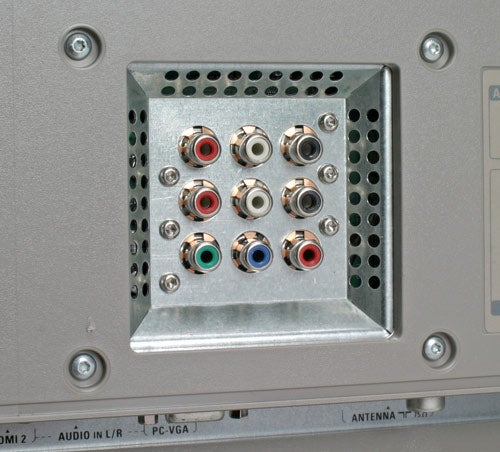
So, obviously this Philips meets the HD Ready criteria when it comes to resolution, but it has all the other bases well and truly covered as well. HD inputs are well taken care of with two HDMI ports along with a set of component video inputs. Next to the component inputs you’ll find the usual corresponding analogue audio inputs, but rather more interesting is a coaxial digital audio input. You also get both analogue and digital audio outputs, in case you want to run the sound from the internal TV tuner to an external amplifier or processor. But the connection options don’t end there, you also get two Scarts, a D-SUB PC input, S-Video in and composite video in.
There’s also a CI slot for adding subscription services to the built-in digital Freeview tuner. Complementing the digital tuner is the 7-day EPG, which is well presented and easy to navigate, unlike some TVs we’ve seen recently, you can navigate through all the channels rather than just the one you’re currently viewing.
There are some more unusual connectors present too. First up there’s an Ethernet port that allows you to connect the 37PF9731D to your home network. Once hooked up, you can load the Philips media manager software onto any PC on the network and stream pictures, music and video direct to the TV. This worked very well in practice, although you really want to make sure that the PC you’re streaming from isn’t connected via Wi-Fi, as even with 802.11g you’re going to get stuttering and freezing occasionally. When streaming from a PC that’s hard wired, the video is smooth as silk. Once all hooked up I found myself watching the first few episodes of Lost season three, although I’ll no doubt watch them all again when Sky starts to broadcast the show in HD later in the month.
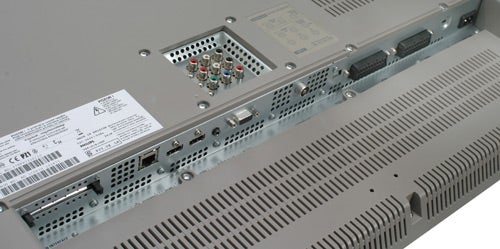
The 37PF9731D has a decent array of codecs built into it and I found that I could playback an array of XviD video files. Even more impressive is that you don’t have to stream your files over a network, you can plug them straight in. You see the 37PF9731D also has a pair of USB ports so you can dump your video on a USB key and play it directly. As if that wasn’t enough, there’s also a multi-format memory card reader, so you can whip your card straight out of your digital camera and show the pictures on a big screen.
Of course having loads of extra features like these is all well and good, but when you buy a high-end TV like this, the most important aspect is image quality. Thankfully Philips has got the basics well and truly covered with this set, as it produces some of the best pictures I’ve ever seen on a television. Despite the fact that the high resolution of this set is very welcome, in my experience, the best image quality tends to be a result of good image processing rather than the number of lines displayed, and in the area of image processing Philips really does excel.
First up we have Pixel Plus 3 HD – that latest version of Philips’ highly acclaimed image processing engine. This brings with it a host of improvements like better colour accuracy and reduced noise. In practice I found Pixel Plus 3 HD to be absolutely superb. Despite the fact that Philips is clearly concentrating on making HD sources look as good as they can be, Pixel Plus 3 HD made a huge difference to standard definition sources.
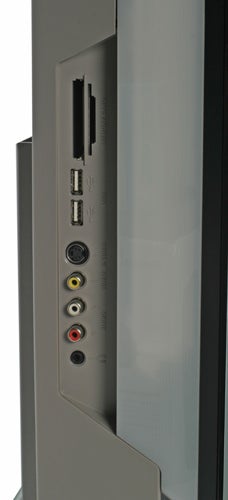
The other major part of Philips’ image processing arsenal is Clear LCD. With Clear LCD Philips is trying to move away from LCD’s PC monitor roots and create a technology that’s more in tune with video viewing. The two main areas that Clear LCD addresses are the two main shortcomings of LCD technology – contrast and motion smearing. Clear LCD incorporates a scanning backlight system which mimics the way a CRT works, thus improving the panel response and eliminating the motion smearing issue. Clear LCD also includes a feature called Deep Dynamic Dimming. This means that the intensity of the backlights is constantly changing depending on the subject matter – the result being that blacks look black rather than dark grey.
The best part about all of Philips’ clever picture processing is that it’s not an on or off affair, everything is done dynamically. So, the amount of noise reduction for example is constantly changing, depending on how much help the source signal needs. What this means is that you rarely find that the picture looks over-processed, because the TV is always applying just the right amount of image tweaking. There’s even a menu option that lets you monitor exactly how much image processing the TV is performing in real time. There are also demos for the different image processing features, where the TV splits the screen in half, allowing you to compare the picture quality with and without Pixel Plus or Clear LCD applied.
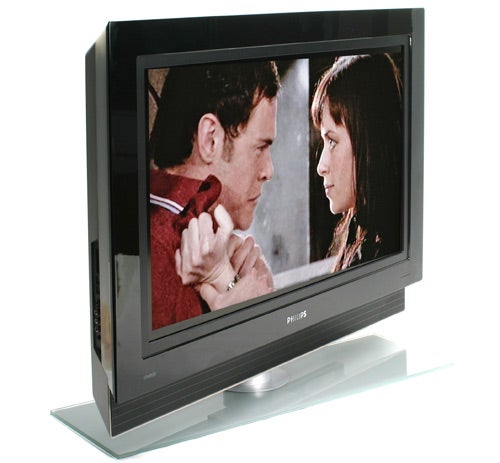
The specifications back up the technology being applied to this set. Philips quotes a dynamic screen contrast ratio of 6000:1, which would suggest strong blacks. While the quoted panel response time of 3ms should result in smooth panning and motion. But good specifications don’t always result in good performance, and the proof of a TV is in the watching.
Thankfully, the end result of all of Philips’ back-end technology is quite simply superb, with the 37PF9731D producing simply staggering image quality. When I fed this TV a diet of high definition footage the images it produced took my breath away. I hooked the 37PF9731D up to my Sky HD box and kicked off (excuse the pun) by watching the Man United vs. Liverpool Premiership game and I was amazed at the clarity of the pictures. The colours were so vivid and bright, but without compromising edging, but best of all there wasn’t the slightest hint of motion smearing. Even if you were a Liverpool fan you would have enjoyed watching the game on this TV!
I watched a number of HD movies, but it was Star Wars Episode II: Attack of the Clones that stood head and shoulders above the rest. The scene when Jango is chasing Obi-Wan through the asteroid belt looked better than I’d ever seen it – the colours almost jumped out of the screen at me, while the blackness of space looked black, rather than grey. The contrast in this scene really did show off just how good a job Clear LCD is doing when you throw a great source at it. At the other end of the scale, the sun bleached landscape of Tatooine seared through my retina, just like looking out into a real dessert in the blistering sun would.
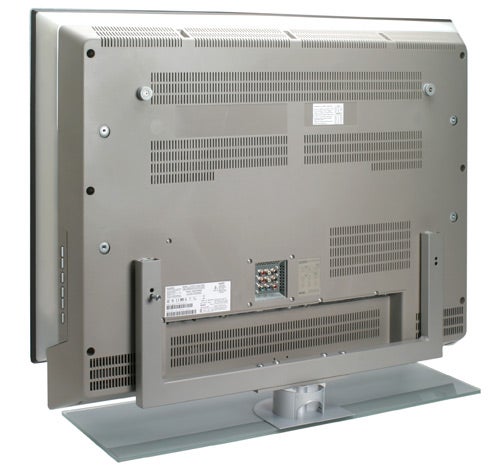
Things were no less impressive when I hooked up the Xbox 360 – high definition gaming has never looked so good. The bright, almost oversaturated colours of DOA 4 looked almost radioactive, but not at the expense of any detail. It was still possible to pick out every curve on each fighter – something that any DOA fan will tell you is vitally important to the gameplay! Firing up FIFA 07 produced a virtual footballing experience that could convince your mates that it’s time to upgrade their gaming console and TV in one fell swoop. Electronic Arts’ completely new FIFA engine for the Xbox 360 looks superbly detailed on this TV – even if you’re a die hard Pro Evo fan, you’d be hard pushed not to be impressed at how this game looks on the 37PF9731D.
Now, don’t go thinking that you’re going to have to feed the 37PF9731D a high definition diet to get good results, because it works its magic just as convincingly on standard definition sources. Using the TV’s built-in digital tuner, the 37PF9731D turned in some of the best looking Freeview images I’ve ever seen. And this is a very important point, since we’re all going to be watching a lot of standard definition TV for some time to come.
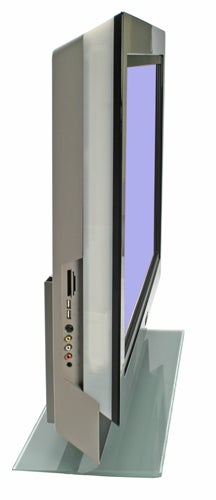
But everything wasn’t absolutely perfect. I found that if I chose to watch a Sky HD movie that was presented in an anamorphic widescreen format at say 2.35:1 and wanted to view it in its native aspect ratio, the 37PF9731D obliged, but it also displayed a bright green line at the top of the screen. Absolutely no amount of fiddling could get rid of this line and the only solution was to switch the picture mode to Auto and allow the TV to zoom the image to fill the screen. Having spoken to Philips it appears that this problem is due to the 1:1 pixel mapping employed by the 37PF9731D. If a source isn’t outputting the entire 1080 lines (as it appears the Sky HD box isn’t) then missing data presents itself as a green line.
The simplest solution to this problem would surely be to just not twist the pixels that aren’t receiving data, which would leave that line black rather than green, and would be pretty much unnoticeable. Interestingly, this issue didn’t present itself when I played a Blu-ray movie on the 37PF9731D, so it would definitely seem to be a source specific problem.
But the 37PF9731D has one more little trick up its sleeve, Ambilight. As I’m sure you’re aware, watching TV in a totally dark room doesn’t give you the best experience and also isn’t very good for you. What Ambilight does is throw ambient light around the TV itself, thus creating the perfect viewing environment. The colour of the light also changes to match the image on the screen. Now, I have to say that I was very sceptical about Ambilight, thinking that it was just a gimmick to differentiate Philips TVs from the competition, but having lived with the 37PF9731D in my living room for the past couple of weeks I have become a bit of a convert. Turning the lights off and turning Ambilight on really does create a more pleasant and immersive viewing environment. You can even tailor the intensity of the Ambilight to suit your own personal taste.
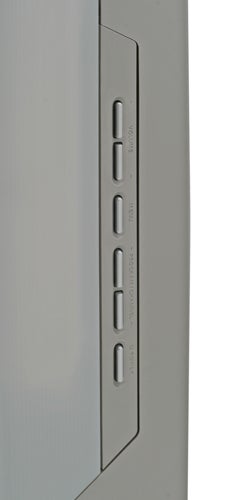
The design of this TV is also first rate, so it’s just as good to look at when it’s switched off as it is when it’s delivering those stunning pictures. The glossy black bezel sets of the screen well and highlights the Ambilight effect, while the speaker bar below the screen adds to the overall aesthetics rather than spoiling them. The large glass base gives the whole package a modern and stylish look and allows for very smooth panning. If there’s one problem with the base, it’s that it’s very wide, which means that you won’t be able to use it with some AV stands. That said, if ever a TV was designed to be wall mounted it’s this one!
I also must give a special mention to the remote control that ships with the 37PF9731D. Whereas many TVs are let down by either overcomplicated or just plain ugly remotes, the unit that accompanies this television is a triumph of simplicity and style. I guess it’s not that surprising that Philips can come up with a great remote considering its Pronto universal remotes are widely regarded as best of breed.
When it comes to sound this TV doesn’t disappoint either. Despite the fact that anyone who buys this set is likely to have a surround sound setup, Philips hasn’t skimped on the audio front. The speakers mounted below the screen give a very good account of themselves, both with high octane explosions and subtle background effects. The dialogue is always cleanly separated as well, never getting lost in the cacophony of effects and swelling musical scores.
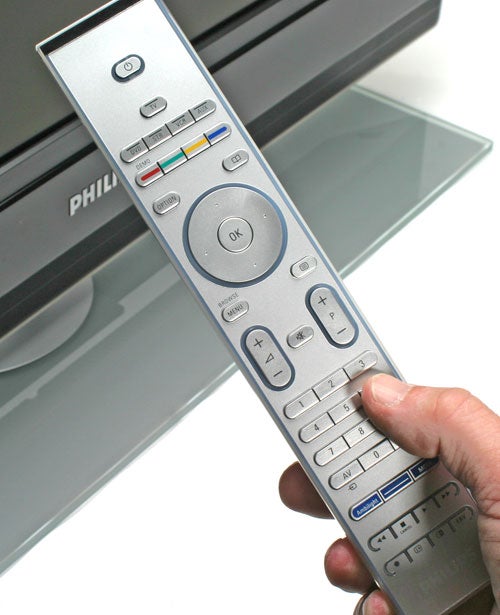
There are two things that you can be sure of with Philips high end TVs – first, they will be very good, and second, they will be very expensive. There’s no getting away from the fact that the RRP of £2,499 is pretty steep, but after a quick look around the web I managed to find the 37PF9731D for as little as £1,812.89 inc VAT and delivery. With a street price of just over £1,800 the 37PF9731D looks like a bit of a bargain considering the feature set and image quality.
”’Verdict”’
The Philips 37PF9731D isn’t perfect, but it’s pretty damn close. The only real issue with this TV is the problem I encountered with the thin green line at the top of the screen, but I’m pretty sure that Philips will resolve this before production units ship. The lack of 1080p input support may seem like an issue for some potential buyers, but there will always be something just around the corner, no matter when you buy.
As it stands, the 37PF9731D is a simply stunning LCD TV that eclipses pretty much everything else I’ve seen to date. The image quality is superb with high definition sources, while even standard definition signals are handled with aplomb. The latter is particularly impressive considering that there is a lot of scaling going on when showing SD video on a 1080 line screen.
The 37PD9731D also has an impressively long feature list that puts many other high end TVs to shame, while its design, ergonomics and simplicity of use are second to none. Throw three-sided Ambilight into the equation and you’re left with a TV that oozes quality, features, style and innovation. Put simply, if I had the cash spare right now, this is the TV I’d want on my living room wall.
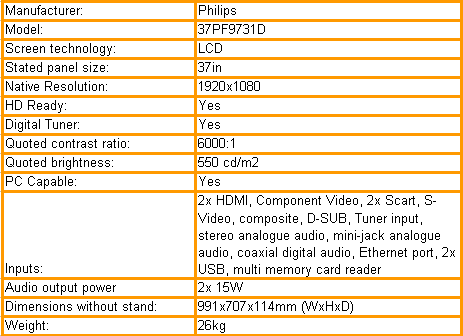
How we test televisions
We test every TV we review thoroughly over an extended period of time. We use industry standard tests to compare features properly. We’ll always tell you what we find. We never, ever, accept money to review a product.
Trusted Score
Score in detail
-
Value 8
-
Image Quality 10
-
Sound Quality 8

